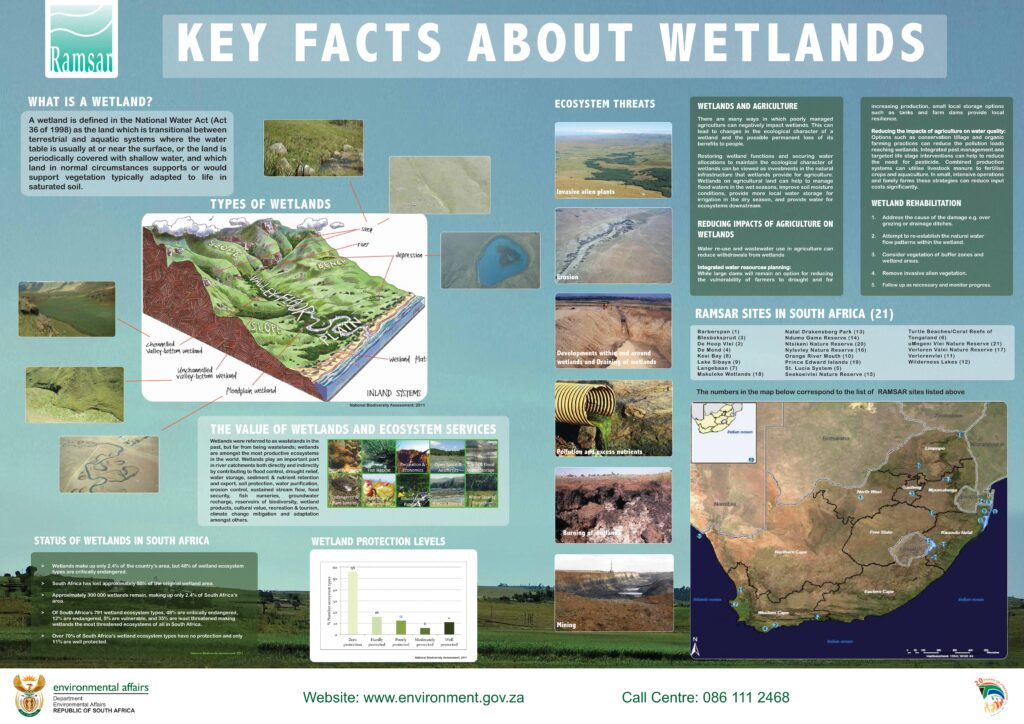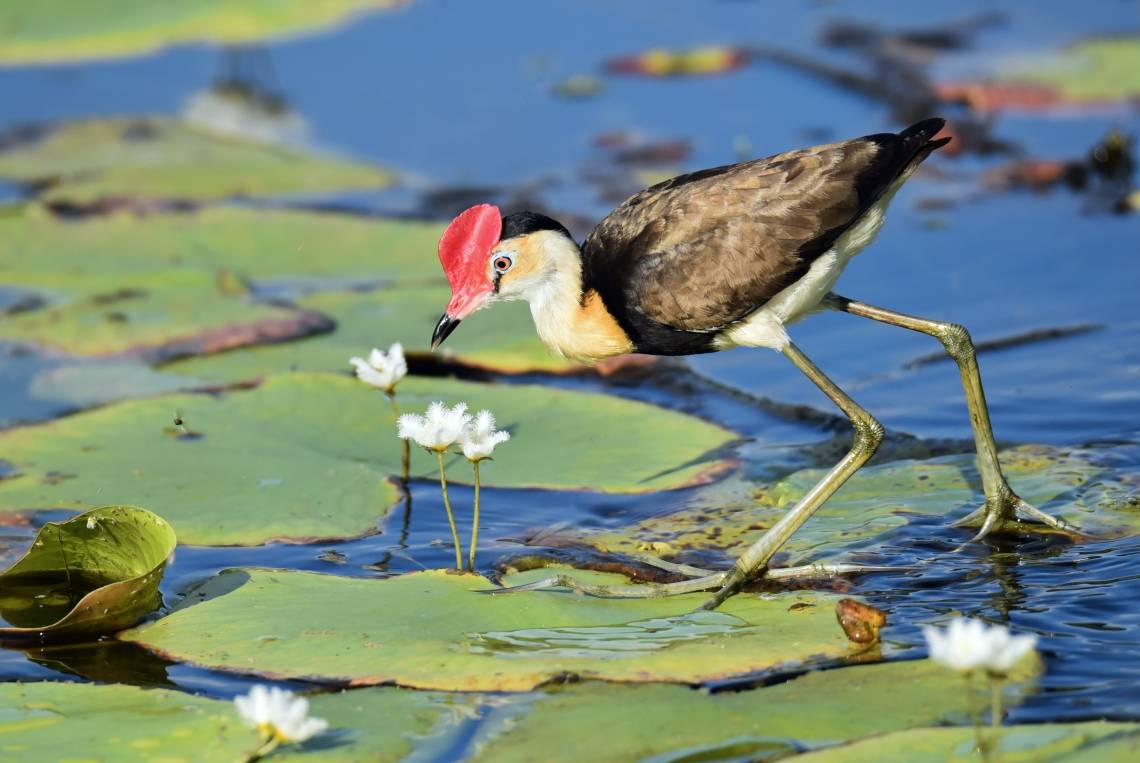Tulani Ngwenya
MPUMALANGA, South Africa – As the world commemorates World Wetlands Day, South Africa has taken a significant step in safeguarding its fragile wetland ecosystems by designating De Berg Nature Reserve as the country’s 30th Ramsar site under the Convention on Wetlands of International Importance. This move comes at a critical time, as nearly half of South Africa’s wetlands are facing critical endangerment, and global wetland loss continues at an alarming rate.
The designation follows a growing recognition of wetlands as lifelines for biodiversity, climate resilience, and water security. Minister of Forestry, Fisheries and the Environment Barbara Creecy announced the new Ramsar site and indicated that wetlands are disappearing three times faster than forests, yet they remain among the most undervalued ecosystems.
“Wetlands are our natural water filters, carbon sinks, and biodiversity hotspots,” Minister Creecy said. “Through the protection of De Berg and other key wetland areas, we are securing South Africa’s future water supply and ecological resilience.”
A vital new Ramsar site
Located in the high-altitude grasslands of Mpumalanga, De Berg Nature Reserve is home to a vast network of pristine wetlands, seepage zones, and high-altitude mountain streams. The region plays a critical role in supplying freshwater to communities and ecosystems downstream.
The reserve supports over 878 plant species, including 30 threatened or near-threatened species, and provides a habitat for rare and endangered species such as the Southern Bald Ibis, blue crane, grey-crowned crane, and mountain reedbuck.
Its Ibis Falls, one of the site’s ten iconic waterfalls, serves as a roosting site for flocks of Southern Bald Ibises, a species increasingly at risk due to habitat destruction and climate change.
South Africa’s wetlands under threat

South Africa’s wetlands make up only 2.4% of the country’s land area, yet they are the most threatened of all ecosystems.
- 50% of the country’s original wetlands have already been lost
- 48% of the remaining wetlands are critically endangered
- Over 70% of wetlands have no formal protection
- Only 11% are considered well-protected
The Addo Elephant National Park, one of South Africa’s most famous conservation areas, is also under pressure. Originally established 94 years ago to protect the last 11 elephants in the Eastern Cape, Addo has since expanded to 155,000 hectares, now hosting over 600 elephants, lions, leopards, rhinos, buffalo, and 437 wetland areas.
Recent research conducted by freshwater scientists Nancy Job and Dirk Roux identified previously undocumented wetlands within the park, including dune-slack wetlands, forested springs, and crater-like depression wetlands. However, they also found that many of these wetlands are severely degraded due to past agricultural practices, altered water flows, and increasing pressure from elephants.
“Wetlands in national parks are just as threatened as those outside,” said Job. “In the Addo Park, past land-use changes have disrupted natural water cycles, and elephant activity continues to reshape wetland areas in ways we need to monitor.”
The importance of wetlands for water and climate resilience
Wetlands are crucial for climate resilience, acting as natural buffers against floods and droughts, filtering pollutants from freshwater sources, and storing carbon to mitigate climate change.
Scientists warn that climate change will increase pressure on these ecosystems, with rising temperatures leading to faster evaporation, altered rainfall patterns, and increased erosion. The new wetland inventory at Addo Elephant National Park will help monitor these impacts, allowing for long-term conservation strategies.
More from Africa News 24
International cooperation key in climate change adaptation
Meanwhile, conservation efforts like the Parys Wetland Rehabilitation Project in the Free State highlight how degraded wetlands can be restored and repurposed for community benefit. The project aims to transform a polluted wetland area into a sustainable conservation and eco-tourism hub, offering birdwatching, cycling trails, and outdoor recreation while restoring its natural functions.
A call to action on World Wetlands Day
As South Africa celebrates World Wetlands Day, experts stress the urgent need for increased wetland conservation, stricter environmental protection policies, and greater public awareness.
“Wetlands are more than just water bodies; they are the kidneys of our landscapes, filtering pollution, sustaining biodiversity, and supporting livelihoods,” said Minister Creecy. “Our future depends on protecting these vital ecosystems before it’s too late.”
With the Ramsar designation of De Berg Nature Reserve and the ongoing restoration of Addo and Parys wetlands, South Africa is taking meaningful steps toward wetland conservation. However, the fight to protect these fragile ecosystems is far from over—it will require continued investment, research, and public engagement to ensure that wetlands remain a thriving part of the country’s natural heritage.












